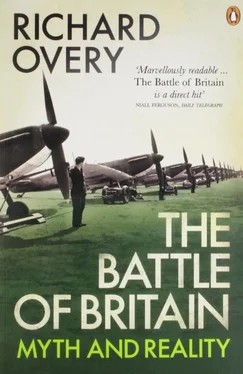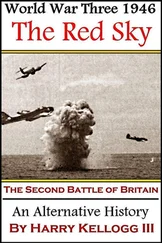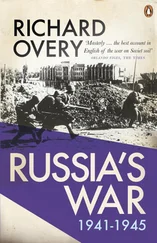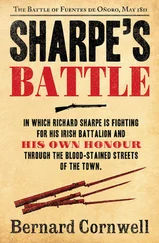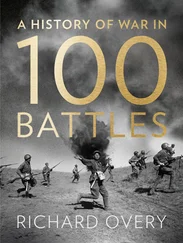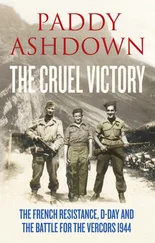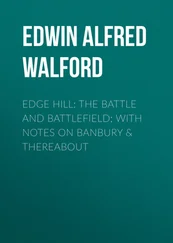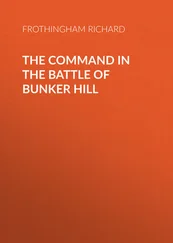Fighter defence was supplemented by a network of anti-aircraft guns and barrage balloons. Anti-Aircraft Command was established only in April 1939. Headed by Lieutenant-General Sir Frederick Pile, it was integrated with Fighter Command to provide a unitary defence network. A crash production programme for anti-aircraft artillery was pushed through, but could not make up for severe deficiencies. By June 1940 there were 1,204 heavy and 581 light anti-aircraft guns to cover the entire country, far short of the planned 2,232 heavy and 1,860 light guns. The batteries were activated, like the fighter stations, from Fighter Command headquarters. The country was divided into 130 warning districts, based on the layout of the national telephone system. Three telephone operators at headquarters kept in continuous contact with trunk-exchanges in London, Liverpool and Glasgow. When enemy aircraft were 20 miles distant, a ‘yellow’ warning was sent to the endangered districts to place emergency services on alert. Five minutes later a ‘red’ alert would follow and air-raid sirens would start up, followed shortly by the anti-aircraft barrage. ‘Green’ indicated that the aircraft had passed and signalled the all-clear. It was a system that worked almost too well. During the summer of 1940 whole areas of the country were sent scurrying into air-raid shelters at the distant approach of a handful of aircraft. The disruption to normal work-time brought the government to the point of abandoning air-raid warning altogether. In June 1940 the Minister of Information, Duff Cooper, suggested that people should accustom themselves ‘to receiving no warnings when only a few aircraft were in the neighbourhood, even if these aircraft dropped bombs’, but the Cabinet sensibly opted to retain some element of warning. 20
The air defence system was set up to counter an enemy bombing offensive and to ameliorate its effects on the bombed population. In the summer of 1940 it had to be adjusted to the threat of invasion. The two operations were by no means the same. Invasion presented Fighter Command with a range of new responsibilities, including close collaboration with Bomber Command, whose aircraft had to be protected as they pounded the invasion beaches. Provisional plans were considered as early as October 1939 when it was agreed to supply the army with two squadrons of Blenheims and one army co-operation squadron to repel an invasion force. The assumption underlying this feeble gesture was that no invasion could be attempted until Fighter Command had been neutralized, and that the real battle would be fought in the skies over southern England long before invasion could be undertaken. 21
By the summer of 1940 invasion was a much more realistic threat. Fighter Command was instructed by the commander-in-chief of Home Forces, General Sir Alan Brooke, to prevent the German Air Force from achieving air superiority and to protect airfields and other vital military targets. At the same time fighters were expected to attack, in order of priority, enemy transport aircraft bringing in men and supplies, enemy dive-bombers, high-flying reconnaissance aircraft and enemy fighters attacking RAF bombers over the invasion area. This dizzy list was enlarged in late summer by additional requirements to protect naval vessels and bases and to attack enemy barges and sea transports with cannon-armed fighters. Bomber Command, meanwhile, was asked to attack ports of embarkation by night. During invasion, bombers were needed immediately over the invasion beaches, where it was hoped invasion could be nipped in the bud in no more than forty-eight hours of ‘utmost physical and mental effort’. 22
Much thought was given to subterfuge. In the October directive it had been assumed that Germany might try to seize airfields using small units of tough airborne troops. 23German success in capturing the fortress of Liège in May 1940 gave real substance to the fear, and priority was given to strengthening airfield defence. The results were often lamentable. Two separate inspections were undertaken by army commanders. They found some anti-aircraft guns placed on the roofs of vulnerable buildings, others scarcely concealed, and many incapable of either seeing or engaging low-flying aircraft. Many stations had neither barbed wire nor pill-boxes. It had been decided that RAF ground personnel should not be armed, so that airfields had to rely on local army units, which would be expected to arrive only after a delay of one to two hours, and in force in only four hours. In August, RAF airfield staff were given arms again, but were not yet properly trained in their use. 24Reports showed that when enemy aircraft occasionally landed on British airfields, they were able to take off again unmolested.
There were also fears that German forces would use poison gas to achieve swift mastery of key front-line airfields. To this threat the only answer was deemed to be retaliation in kind. The Air Ministry sent stores of gas bombs (chiefly mustard gas) to airfields, where they were prepared ready for use at three hours’ notice. The Air Staff preferred the idea of using gas against soldiers on the invasion beaches to be sure of containing the threat at once, but Churchill and the chiefs of staff instructed the Air Ministry in late September to plan for gas attacks on the German civilian population in case gas was used by the Germans in the early stages of invasion. 25Gas attacks were also considered in the special case of a German surprise attack on Ireland, a fantasy that still lived on in Whitehall circles throughout the summer and autumn of 1940. In late June the Air Staff directed the small air force stationed in Northern Ireland to prepare for an attack on German troops ‘and I.R.A. irregulars co-operating with them’. Bomber aircraft were to fly from the mainland bringing either gas or high-explosive bombs. All air crew were asked to exercise ‘particular discretion’ when attacking targets south of the border ‘which may cause loss of life to Irish civilians’. 26This prospect must have seemed a peculiarly daunting one for the force of 12 fighters and 20 light bombers available in Northern Ireland to repel the hitherto unstoppable Wehrmacht. In the end, none of these fears materialized, neither the gas and airborne assault, nor the invasion of Ireland. German military leaders recognized that the preliminary to any land operation was the elimination of the enemy air force, and made their plans accordingly. Victory over France transformed the prospects for a successful air campaign for it allowed the German Air Force to fly from any point on the European coastline from Norway to Brittany. The critical factor for the German side was the short range of the Messerschmitt Me 109 single-engined fighter. Flying from Germany, it would have had hardly any time for combat over southern England; even flying from bases in northern France, the Me 109 could only reach as far as London. When engaged in heavy combat, which used up fuel more rapidly, London was difficult to reach. Some efforts were made to extend fighter range. A disposable drop fuel tank made of moulded plywood was developed before the war, but it was prone to leak and easy to ignite, and was not used. In the summer of 1940 experiments were conducted in towing fighter aircraft for the first part of their flight, but this tactic was also abandoned. 27Prior to invasion, the German Air Force could only contest air superiority across an arc stretched over Kent, Sussex and Surrey.
The air forces that faced Fighter Command were nevertheless stretched out around the northern European littoral. Air Fleet 5 was stationed in Norway, and could only attack with long-range aircraft. Preliminary skirmishes by day in August showed that these aircraft would take unacceptably high losses both from enemy action and the long over-sea flight, and Air Fleet 5 took no further part in the battle. The territory covered by Air Fleet 2 stretched from northern Germany, through Belgium and the Netherlands as far as Le Havre in occupied France. Fighter squadrons were clustered in and around the Pas de Calais, close to their targets. To the west lay Air Fleet 3, which had a much larger complement of bombers and dive-bombers for the attack on coastal areas and naval targets.
Читать дальше
